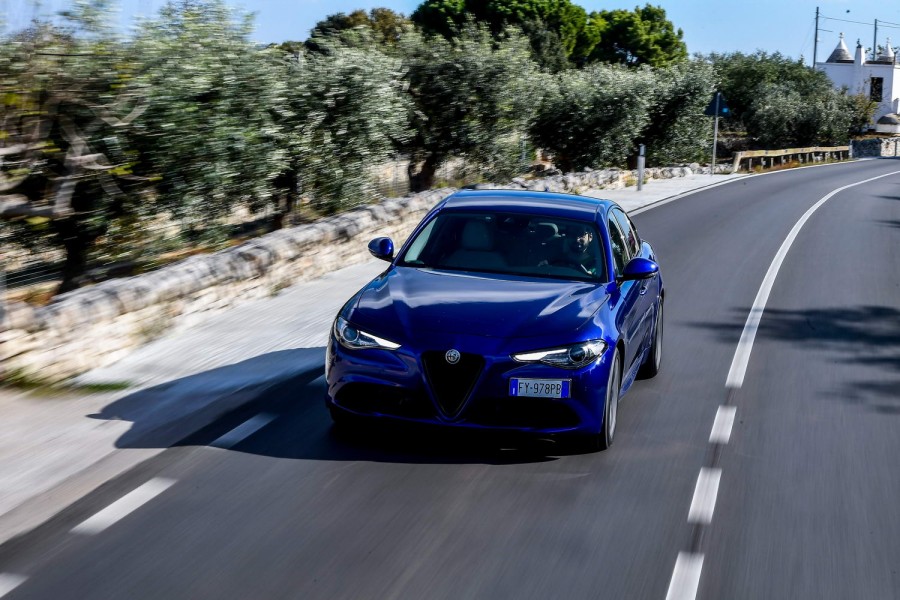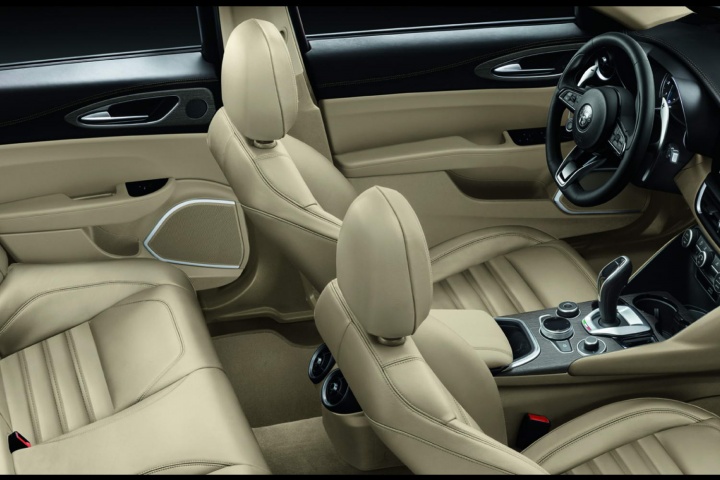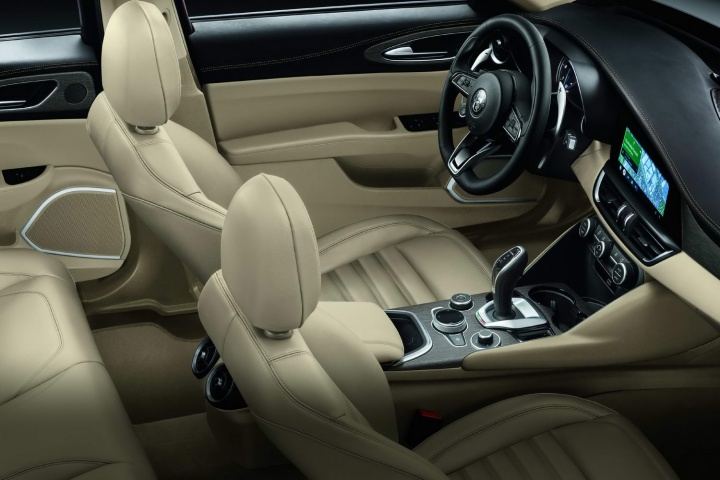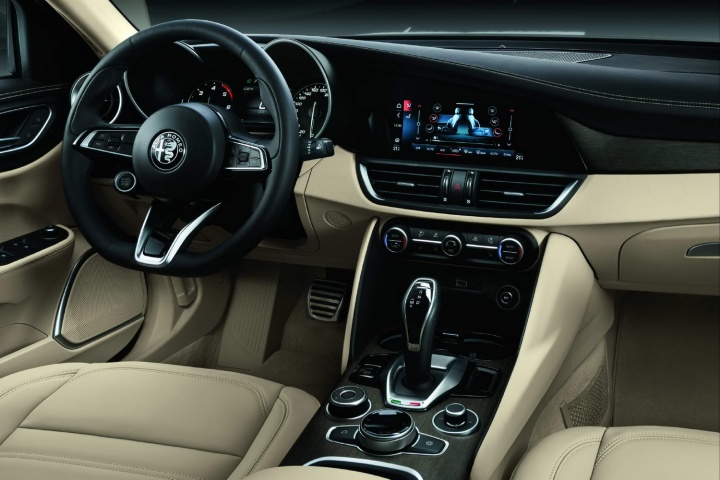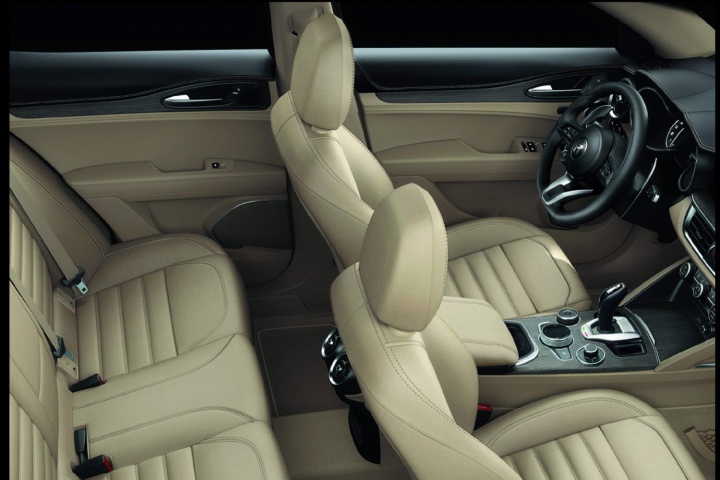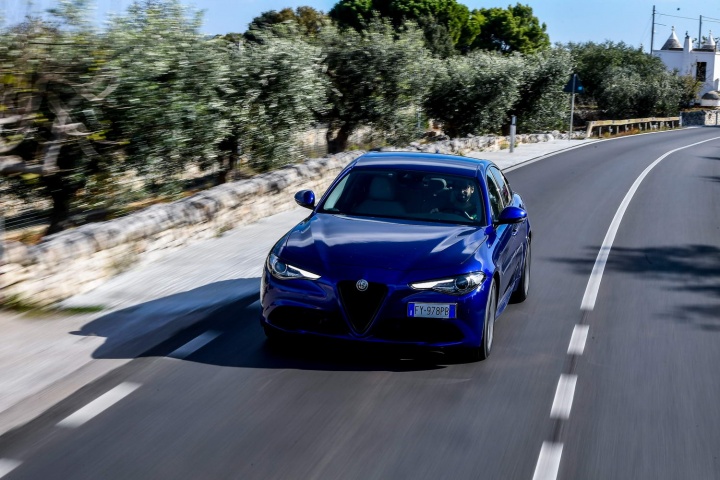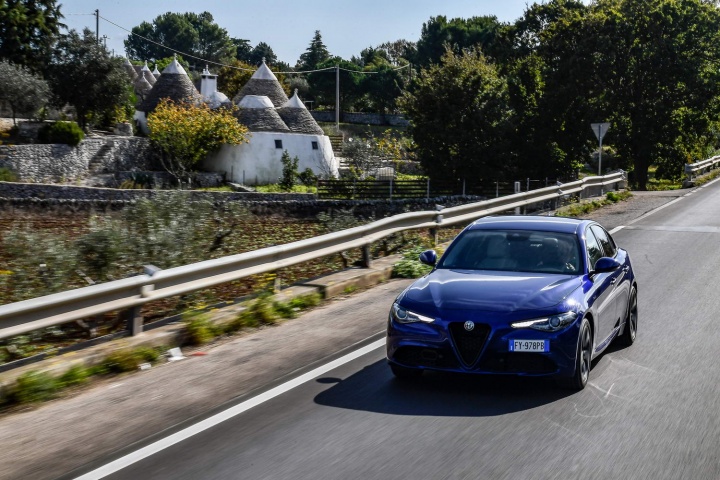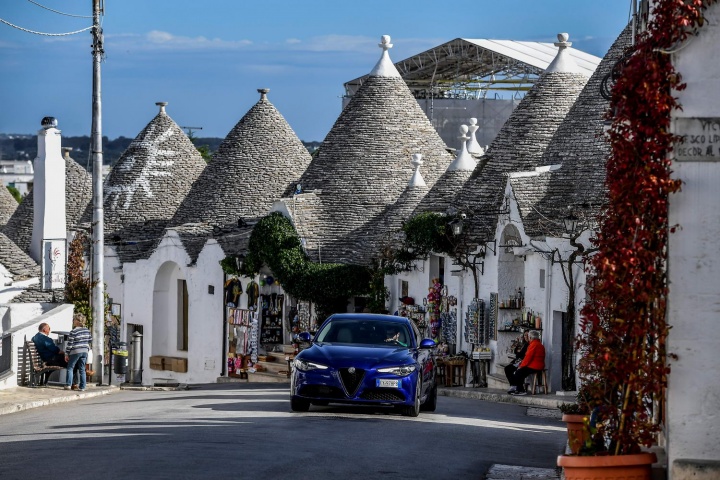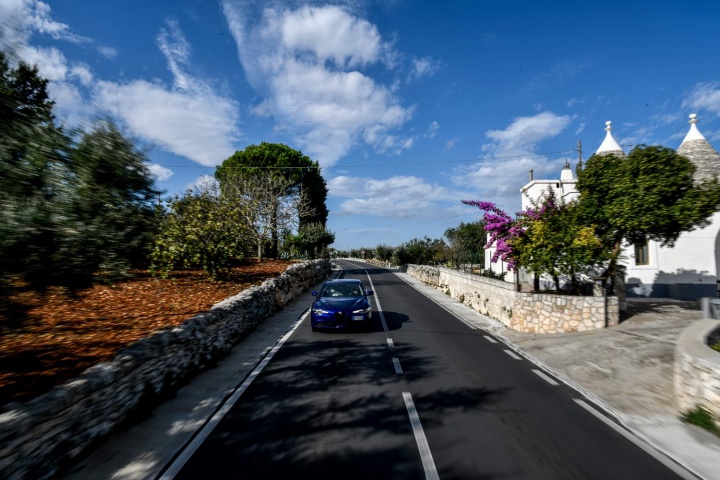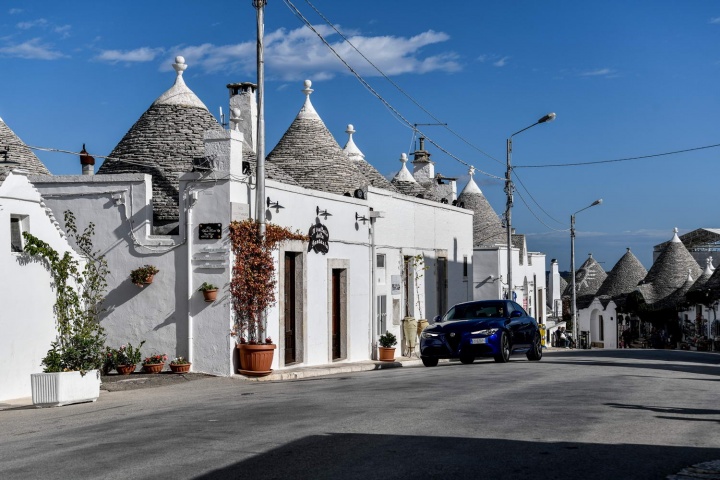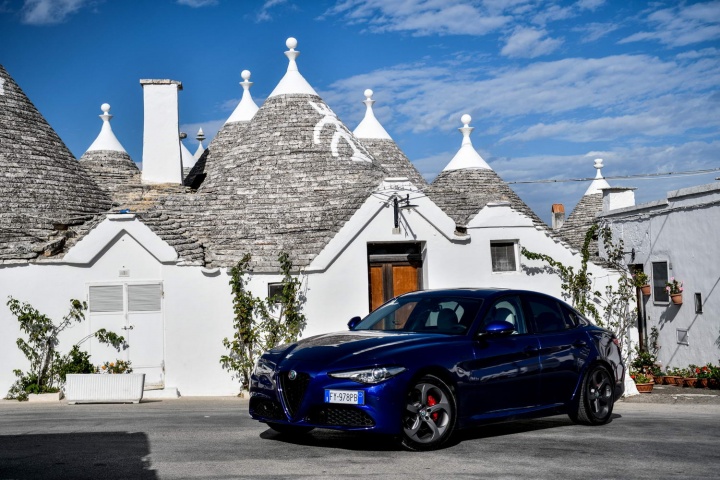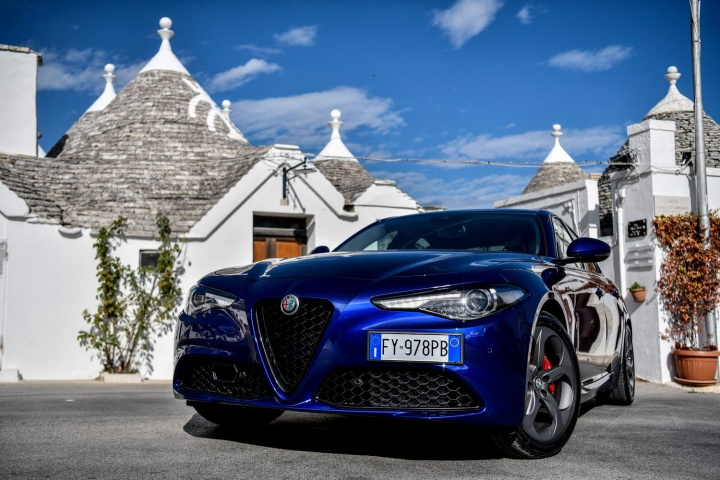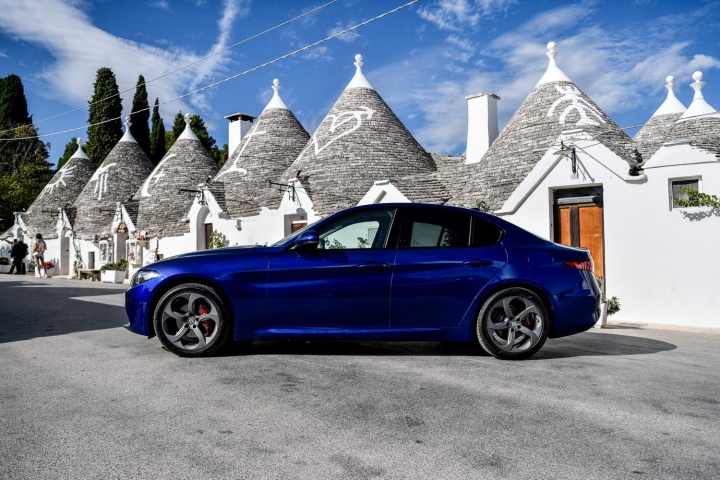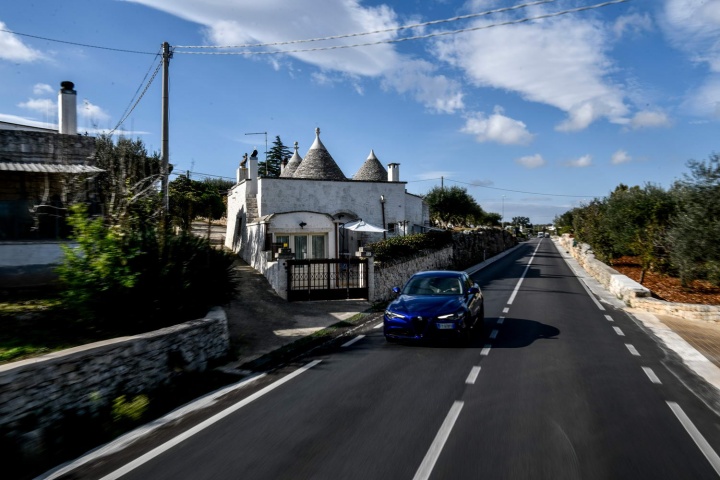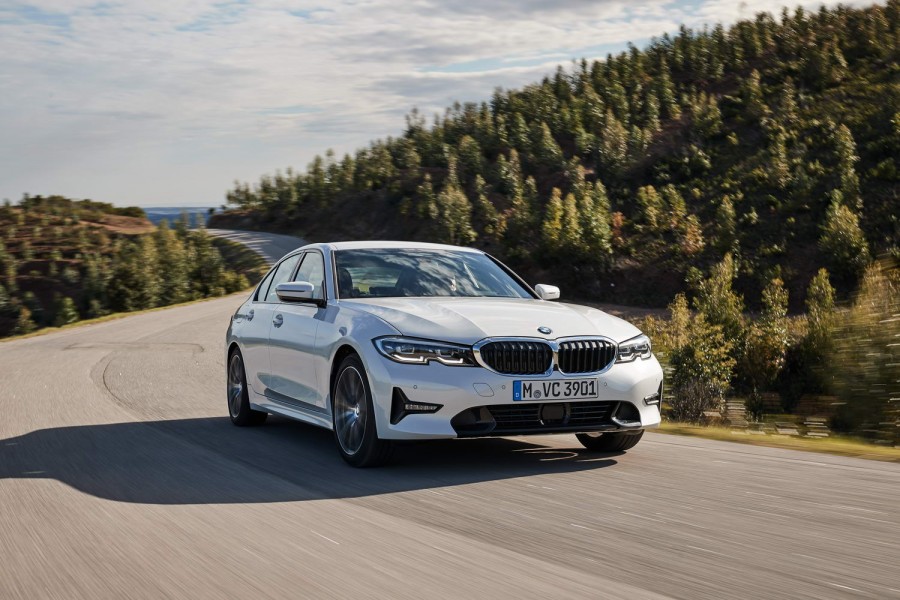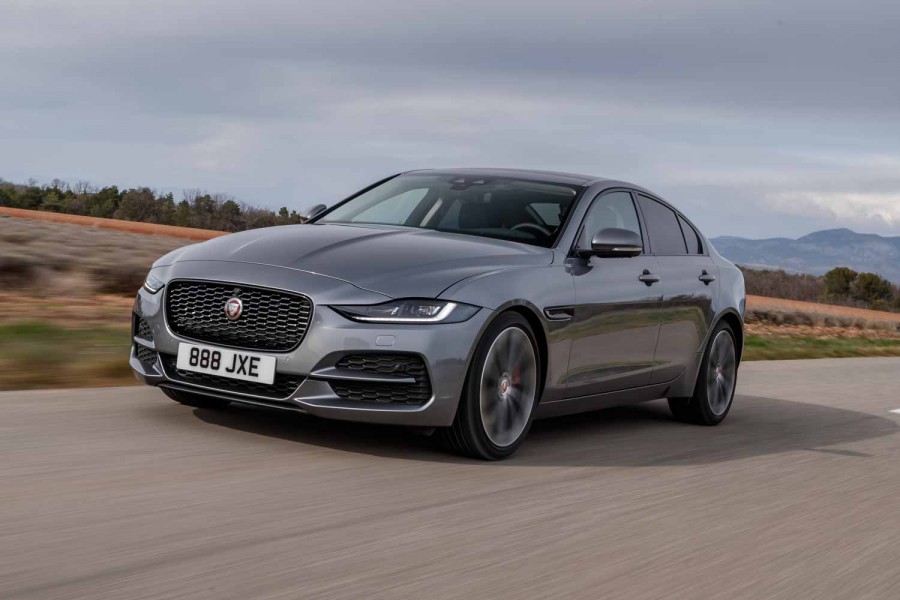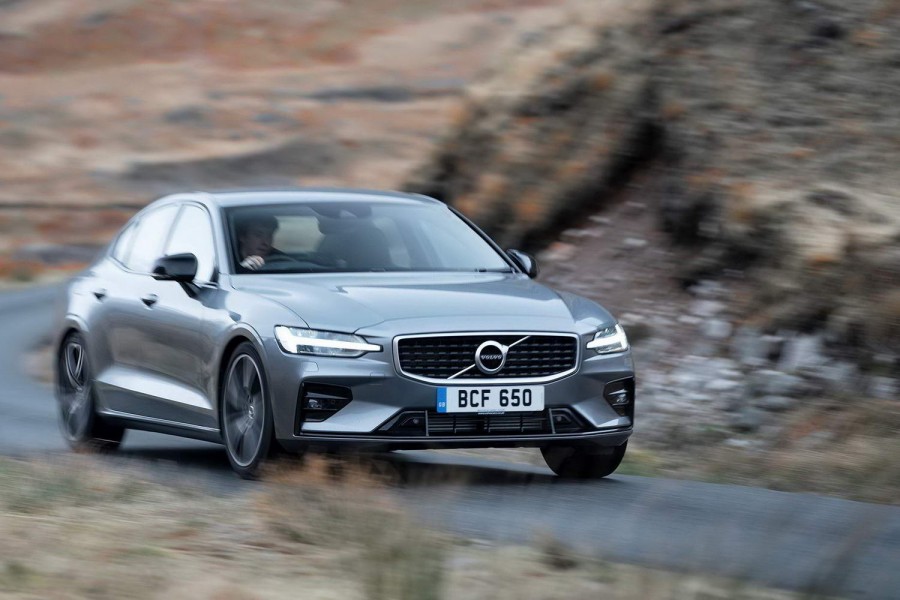Never has so little remedial work done so much for a car. To look at, the 2020 model year Alfa Romeo Giulia is no different to the versions built from 2015 to earlier this year. But to sit in and to drive, this already-appealing package has been notably improved. It's now unequivocally amongst the best in its class.
We're going to start this review of the updated Alfa Romeo Giulia with the usual 'don't bother looking for changes on the outside' line. But this is not facetiousness on our parts: this 2020 model year update is actually not a facelift at all, as the handsome, lissom looks of the Italian have not changed in the slightest. Neither has the choice of motive power: leaving aside the ridiculous and ridiculously talented Quadrifoglio variant for a moment, which is not (yet) included in this update, the same 2.0-litre four-cylinder turbocharged petrol and 2.2-litre (it's 2,143cc, Alfa, so that's 2.1 litres...) four-cylinder JTDM turbodiesel motors are pressed into service. The former comes in 200- and 280hp guises, while the latter is spread across four outputs of 136-, 160-, 190- and 210hp, but here in Ireland we're likely to get only the 200- and 280hp petrol options, and the 160- and 190hp diesels, all of them rear-wheel drive (there are Q4 all-wheel-drive Giulias on the left-hand-drive continent) and employing an eight-speed automatic gearbox.
Instead, Alfa has addressed the main failing of this Audi A4, Mercedes C-Class et al challenger: its interior. The feeling was that the cabin wasn't quite finished when the otherwise-excellent Giulia launched in 2015, and that's clearly the case as Alfa has now enacted a much-needed course of remedial work in this very department. So the steering wheel is a new design, with a thicker rim and wrapped in higher quality leather. The gear lever, which used to have an awful, sharp plastic join right in the 'trigger' location, is now swathed in leather and illuminated. The infotainment can no longer be presented on a weedy 6.5-inch screen on lesser models, as all Giulia 2020MYs gain the 8.8-inch display, which becomes touch-sensitive as part of the updates. Alfa has kept the rotary, BMW iDrive-esque controller on the transmission tunnel, though. All the graphics on the infotainment have been sharpened up considerably, with more apps and functionality brought in, while there's now a snazzy seven-inch TFT display residing in the instrument cluster between a pair of crisp analogue dials. A wireless smartphone charging pad is neatly incorporated ahead of better centre console storage, while two cupholders sit ahead of that much finer gear lever. What you can't see is the addition of more sound-deadening around the passenger compartment, as well as some fiddling with the steering system to improve the Alfa's responsiveness.
Driving it
It would be cynical to say we didn't need to go such a long way to try out a new gear lever, which is a fair point in some respects, but that is to underplay what a brilliant series of changes these are to one of our favourite compact premium challengers. No longer do you have to buy an Alfa Giulia and make excuses about the slightly shoddy cabin, defending your car with talk of its superb driving manners, pert looks and that weird old charter in the petrolhead world that states that you're not a proper car enthusiast until you've owned an Alfa of some sort. Now you can just buy a 2020MY Giulia and know you've got one of the best things in its class.
It still drives as wonderfully well as it ever did. We tried a 2.1-litre turbodiesel Sprint with the 190hp engine, which is a workaday unit. It sounds a bit noisy when you're standing outside it and the car is cold-idling, while it also becomes a touch too vocal and coarse if you rev it beyond 3,500rpm, but even with this pragmatic engine fitted, the Giulia still handles like a sports saloon from the very highest echelons. Weight gain on this improved variant isn't too noticeable, so it remains relatively light at 1,465kg and therefore rides fluidly, controls its mass well, turns in keenly and generally goes and stops like something with about 60 horsepower more than it has. The ZF automatic gearbox is an utter peach, the steering is sharp, direct and communicative, and the Giulia is just a delight to drive.
But the Giulia, which was always a nice thing to cruise in anyway, feels of supreme quality with these updates, because the noise suppression is quite remarkable. We drove the Sprint on Puglian roads in southern Italy, the part of Alfa's homeland that isn't as affluent as the rest of the country, and the road surfaces were truly shocking. Seriously, if you think our roads are bad, try anything in the vicinity of Bari for a clearer barometer of 'potholed'. And yet, the Alfa soaked it all up with unflustered aplomb. It never felt out of its depth, gliding across road surfaces in a serene fashion, while next to nothing of wind flow around the glasshouse nor tyre chatter from the road surface made its way into the cabin. Furthermore, the steering wheel - while fatter than before - hasn't become, um, comically girthy (stop sniggering at the back, please!) and unpleasant to hold (we said STOP sniggering!!), although we do lament the loss of the older, thinner item a touch. However, that gear lever is a huge improvement: admittedly, on an auto, you don't use it a lot, but it's nice not to be cutting your index finger on cheap plastic mouldings when you're shifting from D to P to R and so on. Also, the infotainment is miles better than it was, both to look at and use, and the screen in the dashboard is a classy affair as well. Alfa has genuinely targeted all the key weaknesses of the Giulia and done something worthwhile about each and every one.
What you get for your money
Prices are not yet confirmed for the 2020MY Giulia models, but we wouldn't expect there to be too much of an increase from the old line-up's €44,000 starting ticket. Alfa has also loaded in much more safety equipment now, either as standard or an option, so Level 2 autonomous items (developed by Bosch) added include Lane Keeping Assist, Active Blind Spot Assist, Active Cruise Control, Traffic Sign Recognition and Intelligent Speed Control, Traffic Jam Assist and Highway Assist, and Driver Attention Assist. Hence, the equipment levels, both in terms of creature comforts and useful advanced driver assist systems, should be competitive across the Giulia range.
Summary
What's changed for the Alfa Romeo Giulia 2020MY is very minimal stuff, but it's all carefully considered, beautifully executed stuff, nevertheless. Nicer haptics in the immediate driving area are catered for by the leather steering wheel and gear lever, while the interface, infotainment and visual displays are vastly better than they were previously; maybe not class-leading, but up there with the main pack, at the very least. Throw in greater driving refinement, as well the Alfa's preserved strengths of striking looks and a sparkling chassis, and what you have in the updated Giulia is now one of the first things you ought to be considering in this highly competitive, upmarket saloon segment. This is a brilliant car.

